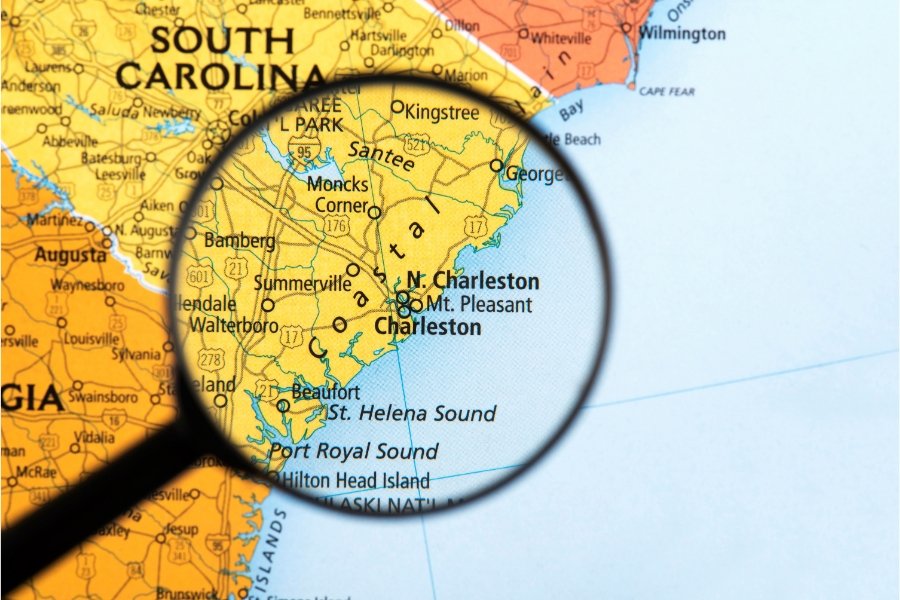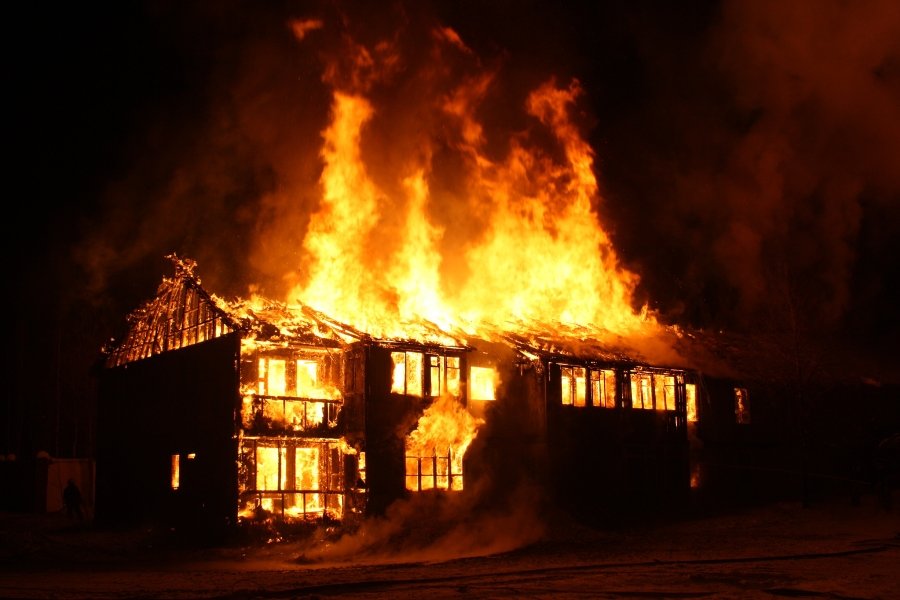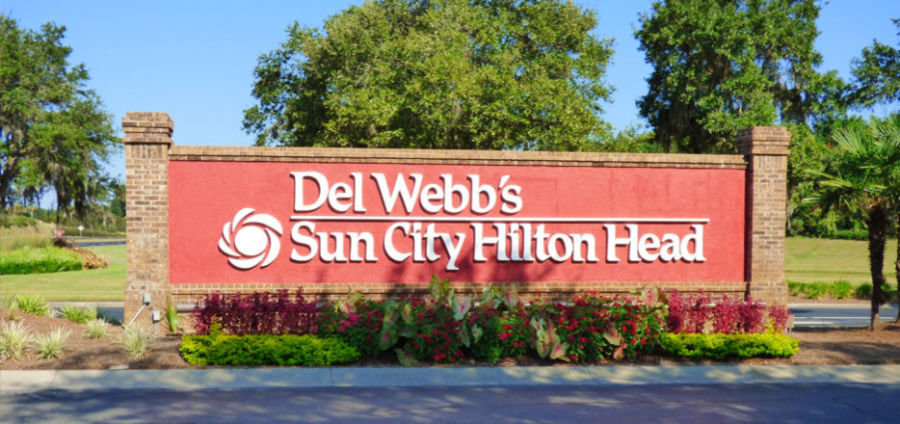Nestled on a high bluff overlooking the May River, Bluffton originally served as a home to native American tribes. They fished, hunted, and gathered oysters in the waters throughout the South Carolina Lowcountry.
The Yemassee Wars
Around 1670, Lord Cardass, leader of the nearby Scottish settlement in Beaufort, invited the Yemassee people to establish settlements in the area. The Yemassee were a multi-ethnic combination of several remnant Indian groups including the Guale LaTama, Apalachee, Coweta and Cusseta Creek, and others. By 1715, the population of the Yemassees had grown to over 1,200 nhabiting ten villages in today’s Bluffton and the surrounding Port Royal Sound area.
Based along the Savannah River, the tribe had developed ties with Carolina at first by exchanging deerskins for trade items. As commercial hunters, however, the Yemassees and other tribes heavily depleted the deer supplies. Consequently, the Yemassee began raiding Florida tribes and trading those they kidnapped as slaves to Carolina merchants.
Unscrupulous traders overextended credit to tribes such as the Yemassee, hoping to force land concessions from them when they could not pay their trade bills. In 1717, the South Carolina government created the Board of Indian Commissioners to regulate trade and enforce fair trade practices. The board, however, and its Indian agent Thomas Nairne had little success in reigning in the traders. The Yemassee trade debt continued to increase and eventually required at least two years labor for every adult male Yamassee. The Yamassees were further angered by the intrusion of additional white settlers into the lands.
In spring 1715, Charleston heard rumors of an uprising by the Yemassees. On April 14, 1715, William Bray, Samuel Warner, and Nairna met at Pocotaligo Town, southwest of modern Charleston, in an attempt to defuse the violence. Having exhausted their deer and slave supplies, the Yamassee decided to resolve their trade debt by killing their creditors and attacking white settlements along Carolina’s southern frontier on Good Friday, April 15, 1715. Intending to kill not only their traders and creditors but most Europeans in their area, they immediately killed Bray and Warner. Nairna died after several days of ritual torture. The Yemassee then struck against plantations near the coast.
Despite its name, the Yemassee War involved the Cherokee, Creeks, and Choctaws in a far-ranging rebellion from the Savannah River to Charleston. Just as Nairne was put to death, other allied tribes also executed their traders, ninety percent of whom were killed by June 1715. Initial attacks along plantations near Port Royal killed one hundred colonists. Some three hundred lucky planter families boarded a ship seized for smuggling and made their escape while the Yemassee attacked their farms and killed their livestock.
White inhabitants fled the countryside for the relative safety of Charleston, the colonists struggled to achieve a defense perimeter around the city. Charles Craven, the governor, utilized all white males and even armed black slaves for the colony’s defense. Surrounding southern colonies sent little or no assistance, although Massachusetts did send weapons. Rumors swirled around the city that either the Spanish or the French had encouraged the uprising.
The turning point in this conflict came at the battle of Port Royal and Salkehatchie where the Yemassee were defeated and driven south of the Savannah River.
The worst of the Yemassee Wars was over by April 1716, and South Carolina officials finally brought the conflict to a close by 1718. The damage inflicted by the war was tremendous. The former prosperity of trade in deerskins was not reached again until 1722. Carolina farmers had been driven from half the cultivated land in the colony. Approximately four hundred settlers had been killed and property damage stood at 239,000 pounds sterling. Military costs to defend the colony rested at 116,000 pounds sterling, more than three times the combined value of all exports. No English colony came as close to eradication by native population as South Carolina did during the Yemassee Wars.
As a result of this trade-based war, the South Carolina government assumed a direct monopoly over the Indian trade in 1716, replacing private Indian traders with government agents charged with obeying stringent new trade guidelines. A company of rangers was created to patrol the backcountry, and scout boats regularly sailed along the southern coastline of South Carolina.
Opening the “Indian Lands” to European settlement, the Lord Proprietors carved the area into several new baronies in 1718, including the Devil’s Elbow Barony that contained the future town of Bluffton. The first Baron, Sir John Colleton, was a former Barbadian planter who accumulated enormous wealth growing cotton, corn, and indigo.
The First Burning of Bluffton
The Colleton family prospered and grew. By 1776, Sir John Colleton (grandson of the original owner) had built several plantations throughout the greater Bluffton area. Colleton sold these holdings in 1777 to various buyers that supported the American cause in the Revolutionary War.
A few years later in 1779, in the midst of the American Revolution, British General Augustine Prevost sacked the Port Royal Sound area and burned all the former Colleton plantations, including what is now known as Palmetto Bluff.
Beginnings of Bluffton
Historic Old Town Bluffton emerged in the early 1800s with small dwellings atop high river bluffs overlooking the May River. This coastal community grew in popularity during the antebellum period as an escape from the oppressive inland plantation conditions in the summer months which often resulted in yellow fever and malaria outbreaks.
Located on the twenty-foot-high bluffs of the May River and facing the cool, southerly winds, it was an ideal summer refuge for planter families. The town, known first simply as May River and then later as Kirk’s Bluff, was officially named Bluffton in 1844 and was incorporated by the General Assembly in 1852.
The layout of the town’s streets in 1830 indicates that it started as a summer haven, and soon developed into a commercial center for isolated plantations in the vicinity that received their goods from Savannah via the May River. The town was a place where children could attend school and planter families could socialize and discuss the politics of the day. Two notable structures reflecting the history and architecture of the time are The Heyward House, circa 1840, and The Church of the Cross.
Bluffton Movement
Literally a hotbed for political rhetoric, in 1844 some of the first cries of secession were given voice and debate in Bluffton.
On July 31, 1844, under a large oak tree (the “Secession Oak”), the first organized political movement with the express goal of South Carolina’s independent secession from the Union, was born. The “Bluffton Movement,” as it later became known, was a call to secession if the South was not guaranteed its rights to slavery, a low tariff, and states rights.
Aggrieved by the Tariff of 1842 and the refusal of Congress to annex Texas, St. Luke’s Parish Planters formed a committee and called for a meeting of individuals and their congressman, Robert Barnwell Rhett, to speak about these issues that had plagued the South since the 1820s. Invitations were sent to nearby parishes, prominent men, and area newspapers (including those in Charleston and Savannah). At this meeting and others to follow, Rhett, a long-time nullifier and disunionist, attempted to rally support for a state convention. He hoped such a convention would nullify the Tariff of 1842 or urge South Carolina’s immediate secession from the Union. These measures were considered by most, both within and outside of the state, as being extremely radical.
St Luke’s Parish Planters (dubbed the “Bluffton Boys”) took the lead in agitating for “nullification or secession” throughout the state. Their political ideology began the radical separatist policy that would eventually bring Rhett into national prominence as the chief spokesman for Southern secession. In the short term, however, the movement’s extreme platform lost momentum quickly. The movement attracted few followers outside of the Beaufort region, due in large measure to John C. Calhoun’s opposition to the movement and its goals. Other Blufftonians were appeased by a compromise tariff passed by Congress in 1846 and the annexation of Texas as a slave state. The ideological descendants of the Bluffton Movement, however, would reappear in the secession crisis of the early 1850s and the eventual withdrawal of South Carolina from the Union in December 1860.
War and the Second Burning of Bluffton
With the Civil War raging and the occupation of Hilton Head Island and Beaufort by Union forces, Bluffton was mostly abandoned by residents and utilized as a base for Confederate pickets observing Union troop movements.
On June 4, 1863, nearly 1,000 Union troops stationed on Hilton Head Island sailed downstream from Hunting Island Plantation targeting Bluffton, chosen less for strategic reasons but more for retribution for the role played by Blufftonians in the secession movement.
Throughout the day and night, soldiers inundated the town setting fire to nearly everything in sight. From a nearby position, 238 Confederate cavalry members were dispatched to meet the threat but by then it was too late. Just two churches and 15 private homes survived amid the ashes of Bluffton from an estimated 70 structures.
Commercial Rejuvenation & Summer Resort
By the turn of the century, Bluffton again experienced growth with the opening of several hardware and dry goods stores and the mushrooming oyster harvesting business. Lowcountry residents returned to Bluffton, a place many had continued to call home for the summer.
The building of the Coastal Highway (US 17) and the bridging of the Savannah River in 1926 ushered in a new phase in Bluffton history, when its status as a center of local trade gradually diminished following the discontinuation of riverboat service to the town. Bluffton’s economy depended mainly on its seafood business and construction of oyster sloops. While Bluffton continued to draw summer residents, its economy declined until the construction of the Talmadge Bridge (1953), which created a shorter route to Savannah, and the construction of a bridge connection (1956) to Hilton Head Island. The development of Hilton Head Island as a major tourist destination in the early 1970s marked a revitalization of Bluffton.
Sun City
The opening of Sun CIty in Bluffton kicked off a boom in off-island (Hilton Head) residential development. Gated communities along Hwy 278 and Hwy 170 and Hwy 46 have become quite popular. Bluffton and its citizens decided to annex nearly 55 miles of land in the 1990s. This increased Bluffton’s tax base. The annex made Bluffton one of South Carolina’s largest towns by land area.
Today, Bluffton’s original one square mile known as Old Town is a vital historic district with many structures listed on the National Register of Historic Places, Bluffton is truly state of mind. This town on the May River offers a variety of antique shops, restaurants, and art galleries. Bluffton attracts visitors from across the Southeast and around the United States.




Leave A Comment